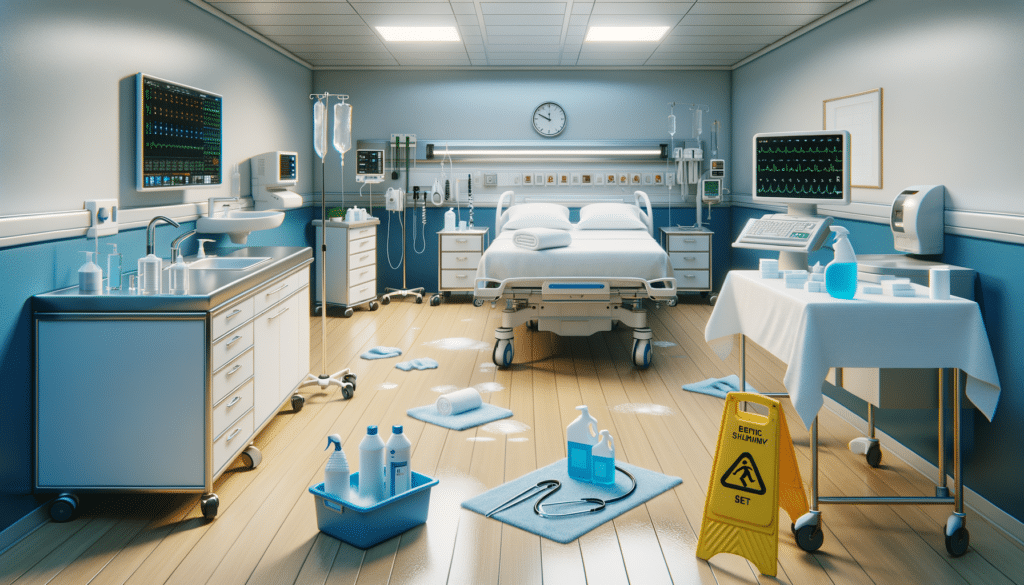Understanding the Importance of Hospital Cleaning
Hospital cleaning, often referred to as healthcare environmental services, plays a critical role in maintaining a safe and hygienic environment for patients, staff, and visitors. The importance of hospital cleaning cannot be overstated, as it directly impacts infection control and patient safety. In healthcare settings, where vulnerable individuals are treated, maintaining a clean environment is paramount to prevent the spread of infections. The Centers for Disease Control and Prevention (CDC) states that healthcare-associated infections (HAIs) affect one in 31 hospital patients on any given day, emphasizing the need for effective cleaning protocols. Moreover, a clean hospital environment enhances the overall perception of care quality, which is crucial for patient satisfaction and trust.
Key Components of Effective Hospital Cleaning
Effective hospital cleaning involves several key components that ensure thorough sanitation and hygiene. These components include:
- Standardized Protocols: Establishing and adhering to standardized cleaning protocols is essential for consistency and effectiveness.
- Trained Personnel: Cleaning staff must be adequately trained in infection control practices and the use of cleaning agents.
- Appropriate Cleaning Agents: The selection of disinfectants and cleaning agents should be based on their efficacy against pathogens commonly found in healthcare settings.
- Regular Monitoring and Audits: Continuous monitoring and audits ensure compliance with cleaning protocols and identify areas for improvement.
These components work together to create a comprehensive cleaning strategy that minimizes the risk of infections and maintains a safe environment.
Challenges in Hospital Cleaning
Despite its importance, hospital cleaning faces several challenges that can impact its effectiveness. One significant challenge is the evolving nature of pathogens, which can develop resistance to common disinfectants. This necessitates ongoing research and adaptation of cleaning protocols to address emerging threats. Additionally, the high turnover of cleaning staff can lead to inconsistencies in cleaning practices, highlighting the need for robust training programs. Budget constraints also pose a challenge, as they may limit access to advanced cleaning technologies and sufficient staffing levels. Addressing these challenges requires a multifaceted approach that includes investment in training, research, and technology.
Innovations in Hospital Cleaning Technologies
Innovations in cleaning technologies are transforming hospital cleaning practices, enhancing efficiency and effectiveness. Ultraviolet (UV) light disinfection systems, for instance, have gained popularity for their ability to eliminate a wide range of pathogens without the use of chemicals. These systems complement traditional cleaning methods and provide an additional layer of protection. Electrostatic sprayers are another innovation, allowing for even distribution of disinfectants on surfaces, reducing the likelihood of missed spots. Furthermore, the integration of artificial intelligence and robotics in cleaning operations is revolutionizing the industry by automating routine tasks and ensuring precision. These technologies not only improve cleaning outcomes but also optimize resource utilization.
The Future of Hospital Cleaning
The future of hospital cleaning is poised for significant advancements driven by technology and a heightened focus on infection control. As healthcare facilities continue to prioritize patient safety, the adoption of innovative cleaning solutions will likely increase. Collaboration between healthcare providers, cleaning professionals, and technology developers will be crucial in developing effective strategies to combat emerging pathogens. Additionally, the integration of data analytics into cleaning practices will enable real-time monitoring and optimization of cleaning processes. As we look to the future, the commitment to maintaining a clean and safe healthcare environment remains unwavering, ensuring the well-being of all who enter hospital doors.





